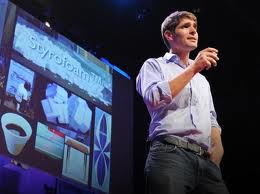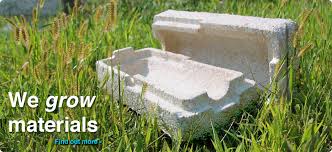Tonight, I watched an enlightening TED talk that is related to previous posts. I wrote  about the Great Pacific Garbage Patch two posts ago, and this sparked the conversation my friend and I and our children were having around the campfire in my last post about Huntsville State Park. I had gotten them all fired up about the prevention of plastic and packaging ending up in our oceans. My son had this brilliant idea that we needed to find a celebrity to promote the cause of clean oceans.
about the Great Pacific Garbage Patch two posts ago, and this sparked the conversation my friend and I and our children were having around the campfire in my last post about Huntsville State Park. I had gotten them all fired up about the prevention of plastic and packaging ending up in our oceans. My son had this brilliant idea that we needed to find a celebrity to promote the cause of clean oceans.
Well, he might not be a celebrity, but Eben Bayer and his company, Ecovative, are doing just that – helping to keep trash out of the ocean by solving the problem of plastic and styrofoam packaging materials. What his company does is take local agricultural byproducts, such as cotton hulls or pea pods, the part of the plant left over when we harvest it, and then uses it to form a base for mycelium, the root-like part of the  mushroom. They process the raw materials, and then place this and the mycelium into a pre-formed mold. In about five days, the mycelium has used the raw materials to grow fibrous strands that take the shape of what it is they are trying to make – such as the corner protection for furniture or TVs, the part that protects the ends in a box.
mushroom. They process the raw materials, and then place this and the mycelium into a pre-formed mold. In about five days, the mycelium has used the raw materials to grow fibrous strands that take the shape of what it is they are trying to make – such as the corner protection for furniture or TVs, the part that protects the ends in a box.
This kind of packaging is usually made of styrofoam, which then is thrown away and ends up breaking down into our environment. Styrofoam uses a large amount of petrol and energy to make, and is practically indestructible. It will sit in the environment for tens of thousands of years, it is projected. This alternative, the mushroom packaging, can just immediately be tossed out in the yard, will biodegrade rapidly and improve the quality of the soil, is very efficient to make, and makes use of raw materials already at our disposal.
It is solutions like this that we need in this time of increasing earth destruction. I was just reading this wikipedia article the other day that made this suggestion, albeit far-fetched, that perhaps the Last Prophet we are all waiting for is the earth itself – that how well we take care of it may be part of the great lesson mankind has left to learn. I think we have come a long way in our understanding of how we can take better care of the earth, but it is imperative we apply the knowledge we have gained so far in coming up with real-world solutions such as this.